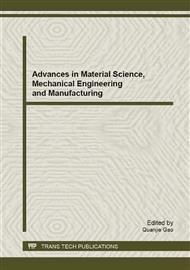p.455
p.461
p.466
p.470
p.474
p.478
p.487
p.491
p.495
Non-Uniform Dose Measurement Based on Two-Stage Bleaching Integrated with Thermo-Luminescence and Optically Stimulated Luminescence Dosimeter
Abstract:
Thermo luminescence dosimeter and optically stimulated luminescence dosimeter are the most popular dosimeters for personal and environmental radiation monitoring. Basically, these dosimeters are both accumulated dosimeters so that they cannot precisely measure dynamic doses, i.e. there is no any information of time resolving. We developed an algorithm to solve the problem that can depress the uncertain measurement by using partially bleaching techniques; the two-stage bleaching method under the fixed bleaching intensity condition. To analyze and compare the difference of ionizing radiation dose between two dosimeters can partially recall the non-uniformly distributed radiation doses. The Gaussian distribution of dose is considered for the simulation and the results indicated that error of the dose rate could be depressed to 15% compared to the traditional method.
Info:
Periodical:
Pages:
474-477
Citation:
Online since:
August 2013
Authors:
Price:
Сopyright:
© 2013 Trans Tech Publications Ltd. All Rights Reserved
Share:
Citation:


